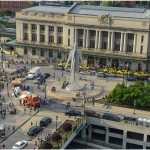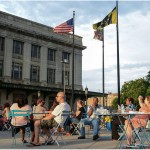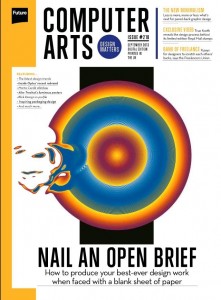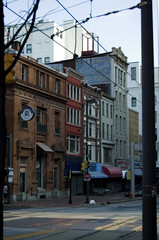Thursday, November 14, 6 p.m. to 8 p.m.
Keck Center, 500 Fifth St., N.W., Room 100
A reception follows from 8 p.m. to 9 p.m.
No charge. Registration and photo IDs required.
American Sign Language interpretation provided
Metro: Gallery Place or Judiciary Square
Register at https://nov14daser.eventbrite.
The Center for Art, Design and Visual Culture (CADVC) at the University of Maryland Baltimore County and Cultural Programs of the National Academy of Sciences co-present a DC Art Science Evening Rendezvous (DASER) exploring the topic of drones. This special event is organized in conjunction with the exhibition “Visibility Machines: Harun Farocki and Trevor Paglen,” on view at the CADVC Oct. 24, 2013 through Feb. 22, 2014. For more information, visit http://www.umbc.edu/cadvc/
DASER will be moderated by JD Talasek, Director, Cultural Programs of the National Academy of Sciences, with Missy Cummings, Visiting Professor of Aeronautics and Astronautics at Massachusetts Institute of Technology, Cambridge, MA, Associate Professor, Department of Mechanical Engineering and Materials Science, the Duke Institute of Brain Sciences, and Director, Humans and Autonomy Laboratory, Duke University, Durham, NC; Marko Peljhan, Artist, Professor, Interdisciplinary Studies, Director Systemics lab, MAT/ART, University of California, Santa Barbara; Peter Singer, Director, Center for 21st Century Security and Intelligence, The Brookings Institution, Washington, D.C.; Opening remarks by Niels Van Tomme, Visiting Curator, Center for Art, Design and Visual Culture, University of Maryland Baltimore County
Join the DASER Facebook Group https://www.facebook.com/
Follow the Twitter Discussion with #DASER https://twitter.com/search?q=%
Watch the Live Webcast http://www.cpnas.org/events/
DASER is co-sponsored by Cultural Programs of the National Academy of Sciences (CPNAS) and Leonardo, the International Society for the Arts, Sciences, and Technology. DASER foster community and discussion around the intersection of art and science. The thoughts and opinions expressed in the DASER events are those of the panelists and speakers and do not necessarily reflect the positions of the National Academy of Sciences nor of Leonardo.






